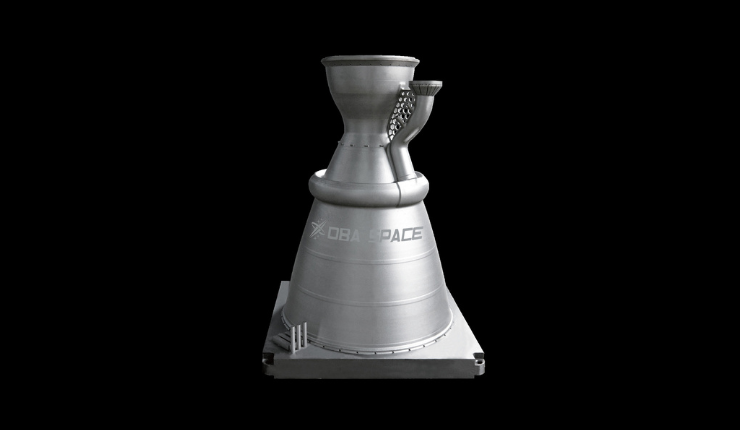
Deep Blue Aerospace has reduced the time it takes to produce a rocket engine combustion chamber by around 70% with Farsoon’s metal 3D printing technology.
The companies have been working together since 2022, when the aerospace company invested in a Farsoon FS621M metal 3D printer to explore rocket engine applications.
Together, Farsoon and Deep Blue Aerospace have been working to deliver higher yield with reduced costs in the manufacture of large-size parts exceeding 600mm. Farsoon’s FS621M machine has a build envelope of 620 x 620 x 1100 mm and so was determined a potential enabler for this ambition. Having carried out months of testing and verification, Farsoon is now reporting that ‘a good number of successful implementations of machine and process optimisations targeting productivity and enhanced quality’ have been achieved.
Among them is the additive manufacture of a combustion chamber measuring 600mm in diameter and 780mm in height. After a detailed analysis and optimisations to the optical system, process parameters, scanning strategy and powder recoating of the FS621M machine, the partners were able to manufacture the combustion chamber in 96.5 hours, down from 327 hours.
Having made this progress, Farsoon has provided details of the enhancements made to its metal powder bed fusion process that facilitated the reduction in manufacturing time. Pivotal to achieving this success, the company says, was the development of advanced multi-laser scanning strategies and a fast-performing algorithm in overlapped areas, which helped to address challenges in laser power control, galvo system calibration, overlap consistency and multi-laser task coordination. These advanced scanning strategies are said to have enhanced control of the scanner and galvo through optimised parameters, improving communication efficiency by 39% while ensuring internal metallurgical quality.
Meanwhile, Farsoon also worked to tweak gas flow design to enable on-time smoke removal and a smoother operation of multiple lasers, with optimisations also made to the control system to reduce waiting time between lasers in order to minimise non-working time. The company then made ‘meticulous customisations’ to the processing parameters to help deliver a high-quality surface.




